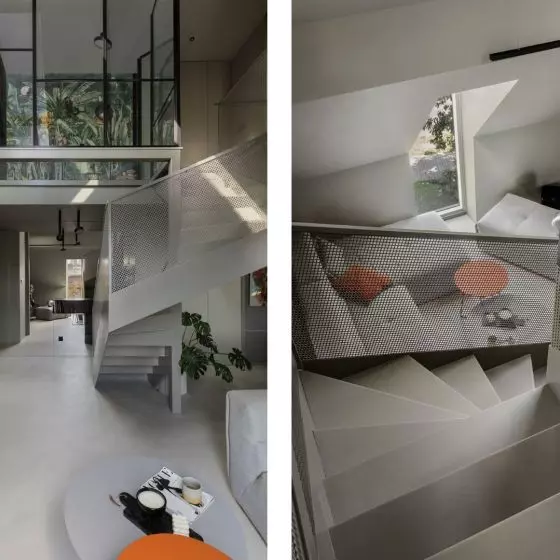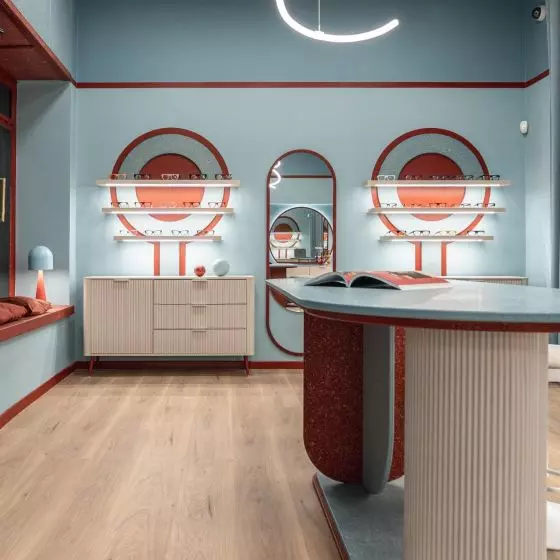We take a look today at the unique interiors arranged in a 19th-century building in downtown Gdansk, which for years served as the administrative and storage functions of the Gdansk Military Uniform Supply Office. What do the brick walls hide today?
living area and kitchenette
photo: Tom Kurek
The building at 17 Walowa Street in the 1920s was converted into the Polish House, an important meeting place for the local community. After the war, until 2017, the building was used for manufacturing activities. Now, after necessary renovation work, the building houses 47 apartments for rent, a reception desk, luggage storage, laundry facilities and fitness space in the attic.
The eye is drawn to the floor laid in a checkerboard pattern
Photo: Tom Kurek
Daria Bolewicka and Daria Skoczylas-Wozniak, architects from the Gdansk-based studio BO/SKO, have designed the interiors of two 35-square-meter semi-detached apartments located on the second and third floors of the building. Each unit houses a room with a kitchenette, a bedroom with a dressing room and a bathroom.
bedroom
photo: Tom Kurek
A passageway to the closet is hidden in the built-ins in the bedroom
photo: Tom Kurek
The investor wanted the apartments to stand out from other rental properties, the designers say. - The quality of materials, unconventionality of solutions and unobvious reference to the architecture of the entire building were important. In the interiors, we focused on using Polish design, and cooperated with local craftsmen, they add.
In both apartments, the architects exposed the rough walls of the former Polish House. The interiors, although their layouts are analogous and seem the same at first glance, differ in intriguing details. But let's focus on the similarities: the color palette chosen by the designers is warm, dominated by beiges, and the floor laid in a beige and terracotta checkerboard pattern catches the eye. This background is complemented by high-quality materials: granite, metal and oak wood.
Fragments of exposed brick in the interior
Photo: Tom Kurek
The lounge area is connected to a small kitchenette. These two zones are connected by an island, from which springs a round black table, at which stylish Nopp chairs designed by BUCK.STUDIO for Fameg were placed. Consistent with the color of the walls, the fronts of the kitchen cabinets are a background for the stone countertop and a fragment of the wall, the subdued space is broken by a colorful lamp designed by Ms. Jurek hanging above the table and a cobalt coffee table.
A black table rises from the kitchen island, a cobalt accent in the interior
photo: Tom Kurek
The apartments, although tall, are small, we wanted to optically enlarge the space, so we decided to make characteristic glazing between the rooms, the architects explain. - In our projects we often refer to geometry, which, in our opinion, is timeless. Analyzing the layout of the preserved details of the brick walls, we proposed two forms: a circle and an arch. The glazed opening, as well as the kitchen island, were highlighted with brass details. Softness in the interiors of both apartments is added by curtains, the natural material surrounds the windows and allows the bedrooms to be obscured, they add.
To optically enlarge the space, the architects decided to make characteristic glazing between the rooms
Photo: Tom Kurek
elaborated. Ola Kloc
Photos courtesy ofBO/SKO studio


















































































